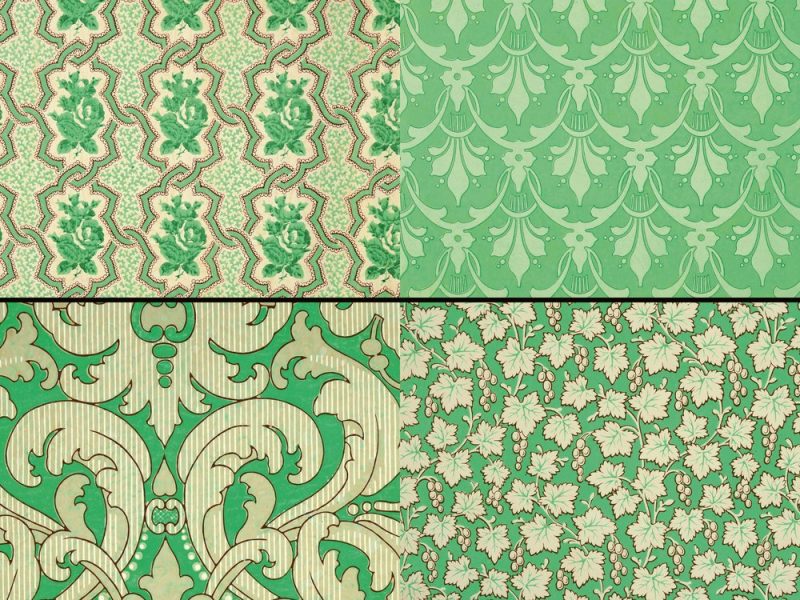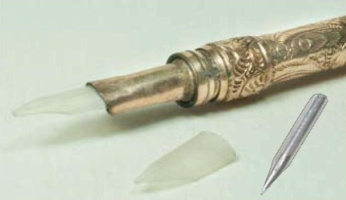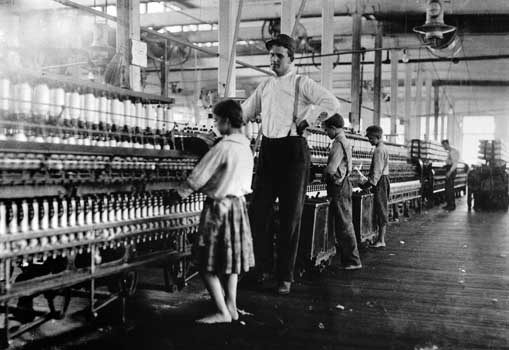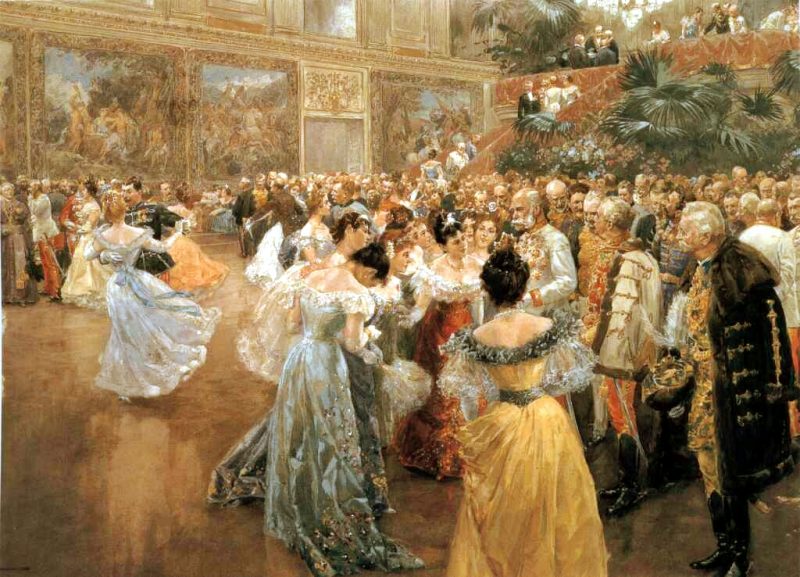From around 1778 onwards, green became an increasingly popular colour.
The brighter the green the better.
Why? For many centuries, prior to that time, most dyes available produces colours that were somewhat muted and ‘dirty’ to the eye – very few colours
were very clean and bright (Royal Purple is called that, because it was one of
the few dyes that was intense and bright, and it was so expensive, to make, coming from murex shells, that it was restricted, by law, for the use of royalty
in many countries).
So, as brighter lighting via gas lights etc came into being, there was a big drive for chemists to find new dyes, that would make colours that stood out brightly at any time, night or day. As with anything new, getting bright colours, be they in your dress, your carpet, or your wallpaper, was a sign of wealth – because new technologies cost more.
Britain became obsessed with green, from when a Swedish chemist, Carl Scheele, came up with a bright green dye, in 1778, which was created using copper arsenide. The green was used everywhere – in clothes, in wallpaper, in paint and in carpet, among other things.
Soon, huge numbers of houses in England had bright green patterned wallpaper, as a way of being at the height of fashion. Soon after, people began to die.
Yes, die. because the colours used were not ‘sealed’ or ‘fixed’ in any way – just touching the wallpaper could transfer arsenic to your skin, colour would flake off, fabric would be leaching poison into your skin as you wore it, children playing on a green carpet would be being poisoned by it, and the wallpaper would be slowly leaching fumes into the air of the room you slept or worked in.
Of course, at first, no one knew this, and deaths were attributed to all sorts of other things. But, as the years passed, doctors and others became suspicious – those suspicions were aided by the terrible deaths of the workers who made the green dyed items. But the public struggled to believe that wallpaper or fabric could kill you, by transferring invisible poisons – it seemed highly unlikely to them.
The main wallpaper manufacturer, famed for green wallpaper, was William Morris – these days better know as an art deco artist, for the wallpaper patterns that he created – most of which were monumentally poisonous. He refused to believe the truth about the arsenic danger in his wallpaper, and stubbornly continued using it into the late 1870s.


This wallpaper was designed by William Morris.
Part of the challenge for doctors in understanding it, was that a healthy adult might barely be affected by the same amount of arsenic which would kill a child or a frail elder. Equally not understood then was the fact that the more protein a person had in their diet, the more arsenic their body could deal with, without terrible effect.
So… it took until the 1860s for people in general to believe it, and for manufacturers to begin using dyes other than copper arsenide. It took until the early 1900s for everyone to truly believe that arsenic was that poisonous and that easily transferred out of other items into the human body.
So – when you read about clothes or wallpaper in the Regency era being ‘a brilliant shade of green’ think about it – whoever lived with those colours was heading for a slow and painful death!





